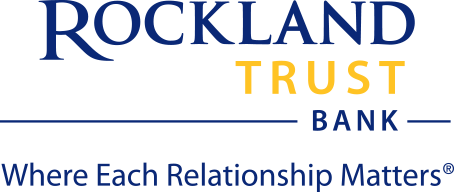Written by Steve Andrews

Optimism from Q1
With Q1 in the books, the US economy has, thus far, outperformed expectations. This is happening despite the growing realization that the Fed may not cut rates at all this year. Most pundits expected no growth in the first half of 2024 following Q4’s strong 3.4% GDP performance. Early estimates for Q1 GDP growth are running between 2.0% and 2.5% as employment remains strong, consumer sentiment (particularly as it pertains to current conditions) remains upbeat, and the sectors of the economy that have suffered the most since the shutdowns (housing and manufacturing) are showing signs of a renaissance.
Spending has been supported by a healthy job market and rising wages. As Q1 drew to a close, nonfarm payrolls increased by 303,000 in March - the biggest increase in 10 months, and over 50% more than expected. Over the past 12 months, the economy has added 2.93 million jobs. The unemployment rate sits at 3.8% and has now remained below 4.0% for 22 months straight – its longest such run since the late 1960s. Historically, this has coincided with a bull market for stocks.
A Closer Look at Employment Growth
The growth in employment of late has been concentrated in three industries, leisure and hospitality services, health care and social services, and government. All three were among the last to recover jobs from the pandemic and all have now replenished the jobs lost during the shutdowns which could portend a slowing in job growth in the months ahead. That said, job openings remain abundant, holding close to the 8.8 million they have averaged over the past 6 months, according to the JOLTS (Job Openings and Labor Turnover Survey) report. While the number of “quits” continues to edge lower, job leavers still enjoy a 10% annual wage increase (more than double the 4.1% increase in average annual wages in March) as companies are still bidding up to entice workers to leave their current jobs.
Rising Import Concerns
Among the headwinds to economic growth are concerns over the Middle East and whether the conflict will escalate and expand. Oil prices rose to their highest level since last October. Adding to oil price pressures may be the sense that global economic growth is improving. The price of copper, which tends to follow global growth, rose to $4.24 a pound in early April – its highest level since January 2023. While some predict another run at $100 per barrel for oil, whether it significantly impacts economic growth remains to be seen. Over the past 50 years, the US economy has grown over 400% while our use of petroleum has grown less than 40%. This efficiency in gas mileage, heating, and other advancements, dampens the impact of higher oil prices on production.
Gold and silver prices are rising as well, with gold at all-time highs in US Dollars. What that means is that the Dollar’s value against gold is at an all-time low, which flies in the face of the 525 basis points in interest rate hikes since March 2022. Rising rates typically boost a country’s currency values (see Japan with its zero interest rates and a very weak Yen), but gold has remained near $2,000/ounce through the entire rate-hiking cycle, and its recent rise points to a US Dollar in decline. A sagging currency fosters true inflation – not the funky inflationary period we’ve experienced since we shut down our economy. The mega-inflation of the 1970s had more to do with the devaluation of the Dollar after we abandoned the gold standard in 1971 than the OPEC oil embargo. From 1971 to 1980, the price of gold in US Dollars soared from $32/ounce to over $800/ounce – that’s real inflation.
Inflation Updates
The Fed has little control over the direction of US Dollar. The strength of the Dollar is determined by the administration in power, along with the US Treasury, but the Fed is cognizant of the Dollar’s impact on inflation, and this may be another reason, along with the steady performance of the economy, why they appear to be in no rush to cut the Fed Funds rate. Fed members have been falling over themselves to assert that now is not the time. Just recently, Fed Chair Jerome Powell said, "I think we've gotten to what is, knock on wood, a pretty good place. We're using our tools to try to bring inflation down the rest of the way to 2%, while all the while keeping the economy strong as well." For a Fed that professes to be data-dependent, the odds of a single rate cut this year are getting lower with each economic report.
The most recent inflation data for March gave the Fed another reason to stand pat. Consumer Prices (CPI) rose 3.5% from a year ago – up from 3.2% in February – as housing costs remained elevated, defying months of expectations that more moderate rent and homeowner costs would soon pull CPI lower. In addition, rising oil prices, which trickle through and show up in the cost of gasoline, have also contributed to higher prices. While the media went hysterical over the increase, we still believe that disinflation will continue and bring inflation down to the Fed’s 2.0% target later this year. China’s economic woes should also help pull US inflation lower as their producer price index fell once again in March (-2.8%), driving the costs for US goods imported from China 3.1% lower from year-ago levels.
Consumer Sentiment & Sector Trends
In the meantime, consumer spending and an improving manufacturing sector suggest that the US economy is in better stead than many appreciate. Business investment is gradually picking up after nearly two years of cutbacks in anticipation of a recession that never came. Spending by firms on “intellectual property products” (i.e., software, R&D, etc.) has now been joined by capital goods orders for new plants and equipment. As we’ve discussed here in the past, Baby Boomers, who hold over half of the record $156 trillion US household net worth, have provided a strong tailwind for the economy, spending on dining, hotels, plane tickets, and healthcare services at near-record levels and boosting employment in these industries and keeping the long-feared recession at bay.
In Conclusion
The markets have stumbled a bit since the month began but it's normal for investors to get edgy when markets sit near record highs. The bulk of the markets’ rally since last summer was fed by the investors who had been unsure of the economy’s prospects in the face of massive Fed rate hikes, but eventually climbed onboard the bull market train. As a result, market sentiment turned decidedly bullish with the bull/bear ratio rising to its highest level since 2018 as April began. Still, many remain convinced that the economy cannot continue to expand without Fed rate cuts. While this will weigh on market sentiment, the sharp rise in interest rates over the past 24 months has not impeded economic growth in a significant way and, with the Fed moving to the sidelines, it allows businesses to make plans without worrying as much about what Washington has up its collective sleeves.





